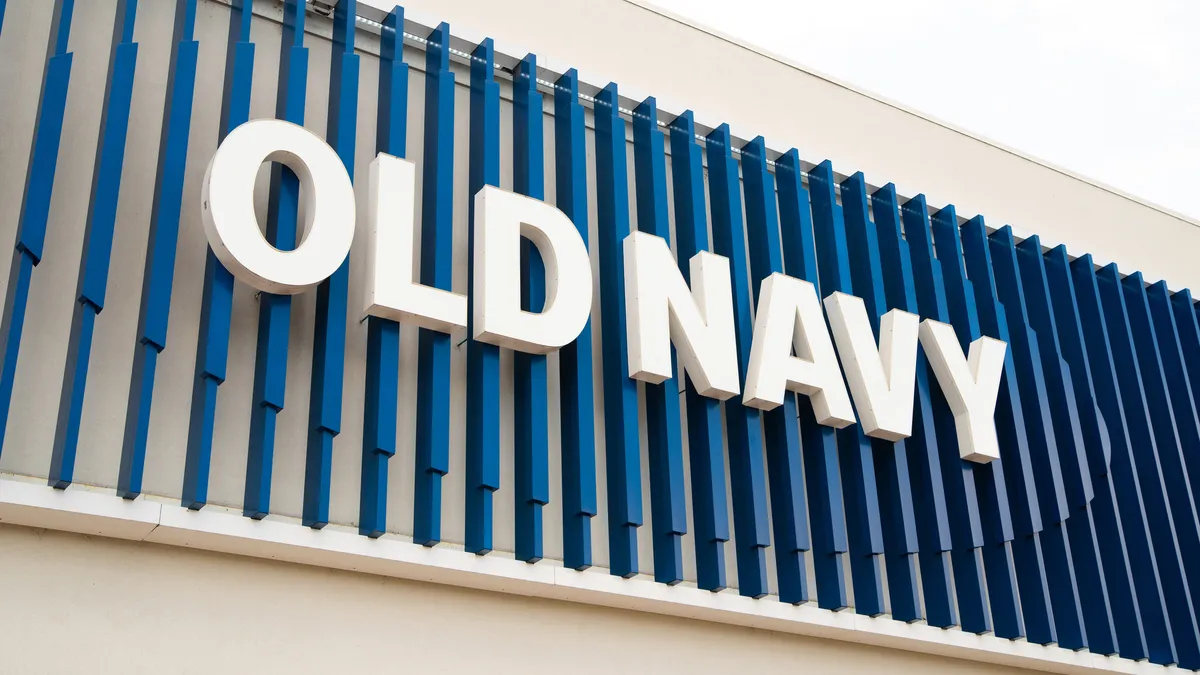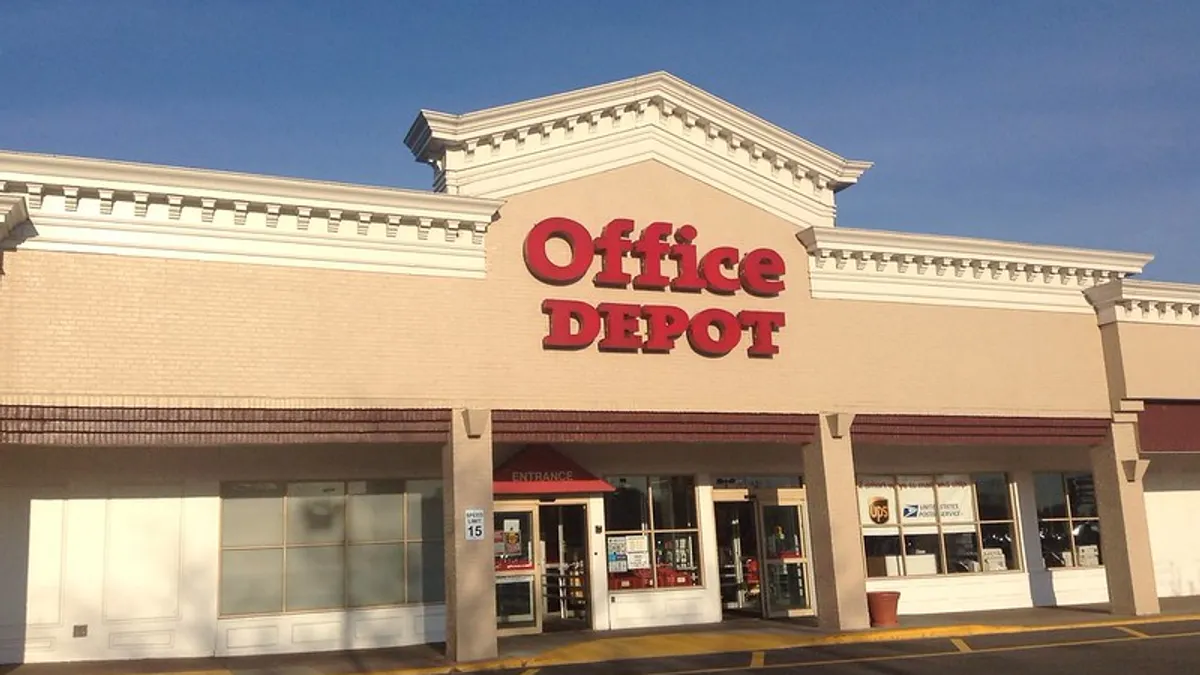Gap Inc. used to be able to count on Old Navy.
For years the value brand has been overshadowing its older sibling, the namesake Gap banner, essentially by offering similar apparel basics at much lower prices. But recent stumbles seem to have morphed into chronic floundering. Last week, Gap Inc. abruptly announced the departure of Old Navy chief Nancy Green. She was a longtime company executive who led merchandising at Old Navy, then moved on to lead the company's Athleta brand. In 2019 she returned to Old Navy as chief creative officer, and took over as Old Navy CEO in 2020.
When she returned to the company, Green faced challenges that preceded the pandemic. In 2017, Old Navy had unveiled a comeback strategy predicated on its ongoing strength. That was replaced two years later by a plan to spin Old Navy off into its own company, in order to free it, and its value to investors, from the underperforming Gap and Banana Republic brands. But the separation never went through in part because Old Navy itself began to report uncharacteristically weak results.
Troubled waters
Plans unveiled in 2020 included expanding Old Navy's store footprint and chasing $10 billion in sales by 2023. But by last year it was besieged by supply chain woes and eked out only muted growth.
The company seems to have had enough. In its press release explaining Green's sudden departure, Gap cited "macro-economic dynamics as well as the execution challenges at the Old Navy brand" and said it is looking for someone outside the company.
“As we look to seize Old Navy’s potential, particularly amidst the macro-economic dynamics facing our industry, we believe now is the right time to bring in a new leader with the operational rigor and creative vision to execute on the brand’s unique value proposition," Gap Inc. CEO Sonia Syngal said in a statement.
But the surprise move leaves the brand without direction at a precarious moment, and suggests disagreement over strategy, according to GlobalData Managing Director Neil Saunders, who said that Green "has done a good job."
"We believe now is the right time to bring in a new leader with the operational rigor and creative vision to execute on the brand’s unique value proposition."

Sonia Syngal
CEO, Gap Inc.
"Gap can be a very controlling company and it sometimes likes to run things from the center – which is why they have lost many brand leaders over the years," he said by email. "It will be interesting to see who they pick to replace Nancy. Whether they go for someone who is more on the design and product side or they look for a more operationally focused person."
For now, Syngal, who herself led Old Navy before taking over leadership of the conglomerate, is stepping in for Green. She and her team are known for their supply chain expertise. Still, despite its importance, the operational side is secondary, Saunders said. "Gap should have these skills within the organization already and, in any case, if the product isn’t right you can’t sell it regardless of how strong your supply chains are."
Old Navy at sea
Old Navy's issues appear to stem from a mixture of merchandising missteps and headwinds outside its control, according to several analysts and the company itself.
Production shutdowns in Vietnam instigated the brand's supply issues, necessitating costly air freight, as noted by B Riley analysts Susan Anderson and Alec Legg in an April 22 report. Additionally, ongoing shipping delays from Asia could mean more air freight, more expense and more trouble getting inventory into stores, they said.
But the inventory that did make it to stores missed trends, the B Riley analysts said. "[T]hey did not offer in-demand denim styles such as wide-legged and flared jeans, currently have a shortage on key men's styles such as khaki shorts, stocked too much casual product in 2021 as consumers switched to fashion, and likely over-indexed into plus-sized," they said, adding that the issues appear to be "taking longer than expected to fix."
JP Morgan analysts last week said that their own store checks and conversations with executives indicate that the company had bulked up on the activewear that had been popular during the height of the pandemic, with "a more limited assortment of occasion-wear or 'dress-up'" items to offer as people got out of their houses for work and events again. Higher freight expenses, supply chain disruptions and unseasonable weather all added to the brand's trouble, those analysts said.
”They did not offer in-demand denim styles such as wide-legged and flared jeans, currently have a shortage on key men’s styles such as khaki shorts, stocked too much casual product in 2021 as consumers switched to fashion, and likely over-indexed into plus-sized."

B Riley consumer, specialty retail & apparel analysts
April 22 research note
"Old Navy is usually very on-point in terms of style but it seems to have been a little off lately," GlobalData's Saunders said. "Assortments are a bit bland and there are not as many stand out ‘must have’ items. This may be related to the supply chain issues and them not being able to put new ranges in front of customers, but regardless it is not conducive to growing sales."
Gap Inc. has also warned that the ongoing troubles could mean deeper promotions during Old Navy's first quarter, and several analysts expect they could extend further into the year. Furthermore, inflation may not be as helpful to Old Navy as Syngal has speculated it may be, thanks to what she called its "value proposition of fashion essentials at jaw-dropping prices for the family."
"In times like this of inflation, a brand like Old Navy can compete very well because the overall apparel contribution to value typically grows," she told analysts in March, according to an earnings call transcript from Motley Fool.
But the toll that inflation is taking on household budgets is interfering with spending on apparel, including at discount players like Old Navy, according to GlobalData.
"Old Navy serves the family demographic and those who are fairly budget conscious," Saunders said. "These groups have started to trim the amount of clothing they buy as the cost of living has soared. This is very unhelpful for Old Navy, especially because part of its model is based on consumers buying lots of items per shopping trip."
New tack
Old Navy remains a powerhouse by several measures.
The brand notched $9 billion in sales last year, and Syngal said it's on its way to its $10 billion goal. Wells Fargo analysts count it as the number two apparel brand in the U.S., with just 3% market share, leaving "ample opportunity for share gains."
Still, whoever replaces Green will face challenges beyond the supply chain and merchandising issues detailed by the company and its observers. For one, in an April 21 research note, BMO Capital Markets Managing Director Simeon Siegel said that the brand "may have just hit its own revenue ceiling."
“All in all, this seems like another bit of drama in the strange world of Gap."

Neil Saunders
GlobalData Managing Director
Even more formidable is the approach to strategy at Gap Inc., which remains somewhat mercurial, according to Saunders, despite the 2019 leadership shakeup that started with Art Peck's exit and ushered in Syngal's team, including Green at Old Navy.
"All in all, this seems like another bit of drama in the strange world of Gap," he said. "Their strategies and plans never seem very coherent and they sometimes appear to live moment to moment, grasping at different things they hope will make an impact. It does not inspire confidence in the company."























